Our Projects
Wahlen VAMC B.1 Emergency Temporary Transformer Replacement
Wahlen VAMC Prosthetics Expansion Second Floor Addition B.1 Prosthetics and Ortho/Neuro/ Holistic Medicine
Wahlen VAMC Emergency Department Urgent Care Clinic Addition
- Mechanical, Electrical, and Plumbing (MEP)
- Fire Protection Engineering
- Technology Design (Security)
The project involved 18,000 sq. ft. of new construction and 13,000 sq. ft. of demolition to relocate the Emergency Department/Urgent Care Clinic (ED/UCC) with accompanying support functions, including police, enrollment, mental health, and decontamination.
The existing ED/UCC was primarily housed in Building 14 (B.14). The new ED/UCC will occupy Building 1 (B.01), and most of the work took place on the ground floor G zone of (B.1). A possible future vertical expansion was also addressed in this project. Additionally, we’re designing associated mechanical (HVAC) and plumbing systems for this addition which involves phasing on a busy VA hospital campus.
Electrical Upgrades, DISA 891 – Hill AFB, UT
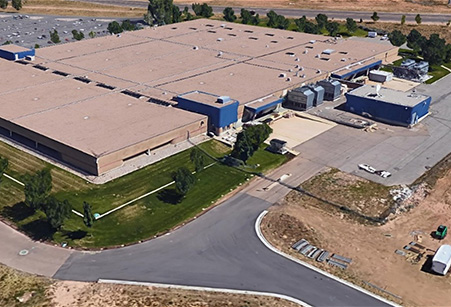
Douglas Wesemann, PE, Acting Contracting Officer, USACE Sacramento
Email
Phone: (801) 586-3296
US Army Corps of Engineers
Utah Resident Office, 7227 6th Street, Building 366, Hill AFB, UT 84056
This was a design-build project for Defense Information Systems Agency (DISA). The project upgraded the electrical distribution system for the existing single-story Defense Enterprise Computing Center (DECC) building. It was designed and constructed to provide a redundant power source consistent with DISA requirements. The facility conformed to a Tier III data center configuration for essential electrical distribution that serves HVAC and house loads.
The use of personal electronics was also restricted. USB devices were not allowed in the building, and most areas did not allow the use of cell phones, cameras, or computers. All workers had to attend a security briefing and complete an enhanced security screening, in addition to the standard screening to enter Hill AFB.
During construction, 100% of the facility had to remain operational. Special steps were taken to make sure this was accomplished. No interruptions occurred during construction. Site and civil work were performed for a new Automatic Transfer Switch (ATS) with a large concrete pad. Footings were also added to support the new electrical equipment inside the building. A new fire suppression system and mass notification system was added to work with the existing system in the building.
The electrical upgrades for Building 891 were in an existing data center that consisted of establishing a new, redundant, essential electrical distribution system (D Bus), new distribution equipment, and migrating circuits from the existing C Bus to the new D Bus distribution. It also included the replacement of the old essential C Bus electrical distribution system and providing new feeds to the equipment. The new C/D Bus installed was a 480V double-ended main-tie-main switchgear which paralleled a local utility source with a generator source.
The project included installing and commissioning all controls, protective relays, programming, and device coordination for the equipment above and developing/implementing a complex sequence of operations for automatic operation of the equipment in split-Bus and common Bus modes for automatic power restoration through paralleled generator power in response to utility source loss.
The work was sequenced, so existing systems remained operational while the new systems were installed. The project included connection and integration with the building’s existing Building Automation System (BAS) and complete commissioning. Experience on the electrical upgrades project afforded HHI with valuable knowledge of USACE design and installation requirements as well as the stringent specifications for sensitive data centers.
This project was a modernization of an operational, secure communications facility, requiring government escorts whenever crews were working inside the building. These working conditions affected the project’s construction schedule and cost. Work had to be conducted in a way that there were no unscheduled outages. Proper notifications and approval were required for any outages. All workers on-site were required to have a government escort. HHI understood the importance of this facility and followed all security protocols required to complete work. HHI met all USACE Sacramento, Hill AFB, and DISA design and installation requirements.
An electrical equipment room was required to be refurbished as part of this contract. Work included a new revamped HVAC system, walls and fixtures, doors and hardware, lighting, extensive electrical wiring, fire suppression control panel, and building management controls.
HHI served as the prime contractor for this project and performed 21% of the contract. All the design and construction tasks fell under the direction of the HHI management team. Tasks included project management, quality control (QC), installation of doors and hardware, steel erection, steel design/fabrication, concrete work, and demolition.
- Design-Build Renovation Project
- USACE Project
- Performed on a Military Installation
- Dollar Award Value Exceeds $500,000
- Completed in the Last Six Years in January 2018
- Modernization of an Existing Military Facility
- Included Six Disciplines/Trades:
- Mechanical
- Electrical
- Architectural
- Demolition
- Civil
- Fire Suppression
Renovation of Building 5, Bay J – Hill AFB, UT
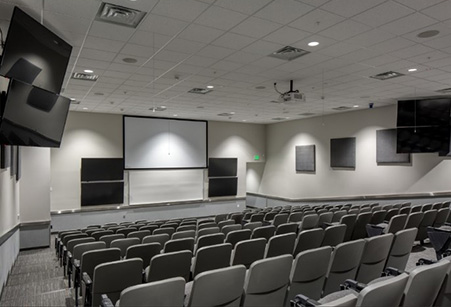
Jonathan Ramras, Contracting Officer Representative, Hill AFB 75th CEG
Email
Phone: (801) 777-4616
6038 Aspen Ave/Bldg. 1289 NE, Hill AFB, UT 84056
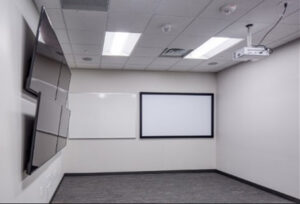
This design-build project was for the repair and conversion of an existing 19,569 sq. ft. aircraft repair shop area into a classified operations and training vault with office and group meeting spaces. The project expanded an existing vault in Bay H for additional F-35A fighter squadrons of the active-duty 388th and Reserve 419th Fighter Wings at Hill AFB. The design and construction of this project involved high-performance and sustainable building principles.
The entire interior of Bay J was demolished. This included the removal of the existing electrical, mechanical, and fire suppression systems. Various sections of the exterior brick masonry were also removed to allow new secure access doors to be installed. The new interior included walls, ceilings, mechanical systems, electrical, HVAC systems with humidifiers, restroom areas, a 189-seat auditorium, and a new fire suppression system. The new openings made in existing masonry walls included new steel frames around the openings to transfer gravity and out-of-plane loads to the remaining walls.
Approximately 23,350 sq. ft. of roof coating was included, with two lower roofs and an upper roof. These roofs were renovated using a white reflective coating/Permaflash, with a 15-year warranty. There were several new roof-top units that were carefully attached to the roof to ensure that it remained water-tight by correctly installing the curbs and flashings. Also included were various repairs to the existing gutter system.
The project site is located in a congested area with ongoing military and construction operations. Constructed during WWII, the historic Building 5 was originally built as a warehouse for the Army Air Corps. Since then, the building has been divided and renovated into several different bays with different missions for the Hill AFB aircraft maintenance wing. Other historical buildings sit close to Building 5, with many newly constructed buildings surrounding the site as well. Construction work on the site required HHI to plan for traffic congestions, site access, security, and avoiding obstructions to neighboring buildings and other Air Force units located inside the different areas of Building 5, which were occupied during construction.
Sensitive Compartmented Information Facility (SCIF) features followed Intelligence Community Directive (ICD) 705, including secure walls, ceilings, doors, and hardware for the classified vault area, along with necessary information technology wiring and equipment, white noise sound generators, rotating blue lights (RBL), security for wall penetrations, access control, and intrusion detection systems.
The entire envelope of the secure area was Sound Transmission Class (STC) 50. This included walls, framed hard-lid ceiling deck assembly, doors, and hardware. The exterior walls were reinforced with OSB plywood sheathing or masonry from the finish floor to the top of the deck above. Existing windows in the secure area were covered with a 1” thick insulated metal panel and a 4” wall system that includes a closed-cell spray foam cavity.
An immense communication package was included for the F-35A weapons system in this building. Many of the rooms were designed to integrate with Lockheed Martin and government-provided systems for the F-35. A sophisticated level of expertise was required by HHI and its team of subcontractors. This team worked together to ensure the systems provided met the Air Force requirements in both accessibility and security.
A complex communication room was provided to manage an internal server for the F-35 systems. Proper planning and execution were required by HHI to provide the correct infrastructure and systems for the government-provided equipment. HHI worked with the user to install wiring through an existing secure vault, which had ongoing security operations. All cabling, rack layouts, power requirements, and labeling met the requirements of the Air Force while minimizing disruptions to ongoing mission activities.
This room maintained a temperature of 68-72°F year-round, with 40-60% RH. The F-35 server system had an equipment load of 125,000 BTU/hr and had a dedicated single-zone packaged RTU with DX cooling with a redundant unit. One RTU operated at a time in a lead-lag sequence. Both RTUs were connected to emergency power. A wall-mounted electric steam humidifier with 20 lbs/hr minimum humidification and a supply diffuser was also located in this room. A humidistat for humidity control was also connected to emergency power.
The auditorium, debriefing, and large conference rooms all included connections to integrate with the internal server using government-provided workstations and other related equipment. Planning was required to ensure these systems worked correctly with the new communication system.
An extensive AV system was required to assist with the mission of the 388th and 419th fighter wings at Hill AFB. Items installed included over 30 NEC HDR 4K monitors, 6” and 8” in ceiling dual-voice-coil speakers, 70v amplifiers, 4K laser projectors, fixed-screen and motorized projection screens, 4K 16x16 HDMI switchers, sound masking system, and white noise system in duct penetrations between STC walled rooms. The auditorium and briefing rooms also included Crestron control systems with audio mixers, amplifiers, and handheld microphones.
This project is also an example of how SAGE-HHI JV can perform on Indefinite Delivery Indefinite Quantity (IDIQ) contracts. This project was performed on the Hill AFA Multiple Award Construction Contract (MACC) III contract. The items mentioned below demonstrate this team’s ability to perform on the FRSM MATOC contract.
- Design-Build Renovation Project
- IDIQ Project
- Performed on a Military Installation
- Dollar Award Value Exceeds $500,000
- Completed in the Last Six Years in June 2019
- Modernization of an Existing Military Facility
- Included Seven Disciplines/Trades:
- Mechanical
- Electrical
- Architectural
- Demolition
- Remediation of Lead and Asbestos
- Civil
- Fire Suppression
Nine Hayman Type Modular Storage Magazines
– Hill AFB, UT
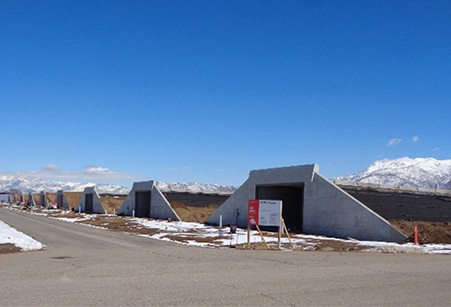
Steve Marsh, Project Engineer, USACE Sacramento
Email
Phone: (801) 726-0583
US Army Corps of Engineers
Utah Resident Office, 7227 6th Street, Building 366, Hill AFB, UT 84056
Each igloo can store 500,000 pounds of class 1.1 ammunitions and includes:
- Precast Concrete Panels (PCP)
- Catenary Lightning Protection Systems
- Communication Systems
- Access Control
- Intrusion Detection System
These igloos were designed as permanent construction in accordance with DoD UFC 1-200-01 and complied with DoD antiterrorism/force protection (AT/FP) requirements per UFC 4-010-01.
Each igloo consisted of:
- Cast-in-Place (CIP) Concrete Footings
- Precast Concrete Panels (PCPs)
- 17’ High Cip Retaining/Headwalls
- A Catenary Lightning Protection System
- Concrete Aprons
- Utilities With Concrete Encased Duct Banks for Power and Communications Conductors
- Site Improvements
- Communication Systems
- Access Control
- Intrusion Detection System
The entire project also entailed extensive soil placement and site electrical work. The project required special attention and quality control to ensure the rebar reinforcements protruding from the foundation walls would align perfectly with the PCPs when erected. Measurements were checked before and during the footing pour and again before and during the foundation pours.
The PCP company ensured reinforcement, pick points, and grout tubes were placed precisely. The two ventilation runs were installed in two parts, the precast phase, and the field phase. These ventilation runs required careful quality control to verify each one was placed correctly on the Igloos. Any delays in these activities could have impacted the project’s schedule and cost.
HHI used a high-flow/high-strength concrete grout to seal in a #7 rebar every 12” at 48” high on the PCPs. The quick-adherence, liquefied grout left no air pockets and formed a solid seal. Using grout tubes, we took special precautions to ensure the liquid grout would fill all the gaps in the PCP joints, not flow out of the forms, and create a clean finish.
This type of application required innovation from HHI and its grouting subcontractor. These grout tubes were designed, fabricated, and tested before the precast panels were formed/cast to ensure the grout would funnel through. For the roof PCPs, HHI installed special forms, compression fit from the floor, to secure the liquefied grout. All grout for this project was required to meet the DoD blast-proof specification.
Structural steel doors were provided for each igloo and flush-mounted in the frames. The doors were manually operated, side-hinged, swinging doors. Frames and anchors were capable of transferring blast and rebound reactions to the adjacent supporting structure. Only steel materials with tension properties for blast resistance were used. Internal locking devices were also provided to secure the doors in compliance with UFC 4-420-10.
Each earth-covered igloo had a 2:1 slope of fill against the precast panel with at least 2’ of fill on top. A lightweight static roll compactor compressed the top fill to ensure none of the PCPs or lighting systems were damaged, which could occur with vibration compaction.
Prior to building the new igloos, existing igloos had to be abated for asbestos and lead-containing materials. Hazardous materials were abated, and the igloos were demolished/removed in accordance with Hill AFB and USACE disposal procedures. Clearing and grubbing were performed while protecting existing vegetation and trees around the site perimeter, as well as the waterways and storm drainage.
The project site was subject to an Entry Authorization List (EAL). All entrance to the site was required to meet the security standards set by Hill AFB Security Forces. HHI strategically coordinated subcontractor and supplier activities to ensure work was done within the MSA’s standard operating hours. Deliveries had to be received during specified hours and offloaded before the close of business each day. This constraint was especially critical when pouring concrete. HHI worked closely with USACE and Hill AFB Security Forces to expedite concrete trucks through the commercial truck gate at the base and pass through the additional security gate at MSA within the allotted time for a proper concrete pour. Finishing crews had to plan and work efficiently to have flatwork finished, cured, and cleaned up by the end of the shift.
The project had extensive underground electrical systems, including a catenary lightning protection system, underground power distribution through large pad-mounted switchgear and multiple transformers, as well as communication lines for data and security systems. The grounding system included a perimeter counterpoise with multiple ground points at each igloo. All metal components on each igloo were welded, bonded, or grounded. The grounding system was certified in the design documents and satisfied the required Hill AFB, USACE, and DDESB standards.
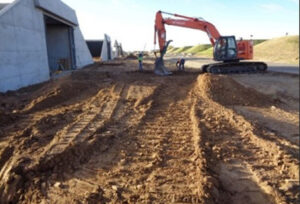
This is a design-build construction project that involved substantial soil removal and placement in a limited work area. Existing structures were demolished and removed from the site. This extensive civil construction work is relevant for the FSRM for large civil task orders with roadwork.
The project also includes the vertical construction of several large structures with unique requirements for munition storage. This project shows that SAGE-HHI JV has the background and recent work experience to conduct civil and building construction tasks orders on the FRSM MATOC.
The items mentioned below demonstrate this team’s ability to perform on the FRSM MATOC contract.
- Design-Build Renovation Project
- USACE Project
- Performed on a Military Installation
- Dollar Award Value Exceeds $500,000
- Completed in the Last Six Years in June 2018
- New Construction of Nine New DoD Facilities
- Included Six Disciplines/Trades:
- Grading
- Retaining Walls
- Site Electrical
- Architectural
- Roadwork
- Landscaping
- Demolition
Automated Platoon Battle Course (AIPBC)
– Fort Carson, CO
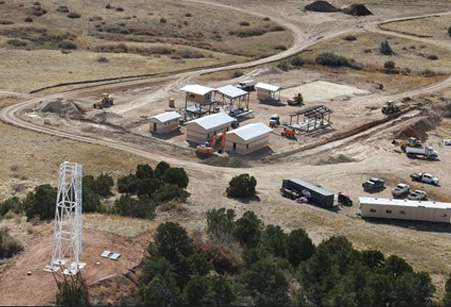
Gregory Sipes, Contracting Officer Representative, USACE Omaha
Email
Phone: (719) 526-4988
Fort Carson South Resident Office
6082 Magrath Ave, Bldg. 1359, Fort Carson, CO 80913
Primary facilities include:
- AIPBC (Range and Infrastructure for Stationary Infantry Targets (SITS)
- Moving Infantry Targets (MITS)
- Moving Armored Targets (MATS)
- Range Operations Control Area
- Control Tower
- Classroom Building
- Operations/Storage Building
- Bleacher Enclosure
- Covered Mess
- Ammunition Breakdown Building
- Latrine
- Wood Structure for Sits
This project was performed in a remote and austere location at Fort Carson in the Range Ops Area, over 10 miles from the Post’s Commercial Gate. The access roads in the Ops Area can be washed out due to flooding or become saturated and inaccessible. This area conducts live training for infantry, tanks, and helicopters. All deliveries and site access must be coordinated with the Range Control Center. In addition, all personnel are required to attend Unexploded Ordnance (UXO) training.
HHI was the prime contractor for this project and performed 25% of the project. Tasks included:
- Project Management
- QC
- Structural Steelwork
- Doors and Hardware
- Various Cast-in-Place Concrete
- Installation of Vapor Barriers
- Insulation of Foundations
- Construction of Wood Structures for SITs
- Installation of the Fixed-in-Place Ammo Break-Down Tables
The immense civil work included a new access road to the site, which allowed for easy and safe access to range from a higher elevation to the lower AIPBC site. Clearing and grubbing with excavation were performed on the three-mile-long site to run new power lines to all targets. New access roads were also added for SITS and MITS maintenance.
HHI’s permanent Colorado Front Range Team managed all phases of this project. Using an established network of local subcontractors with military construction experience, this team was able to meet all Fort Carson and USACE requirements for the project.
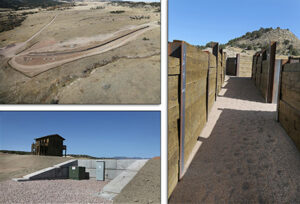
This project was performed at Fort Carson, a potential area for FSRM MATOC task orders. It demonstrates SAGE-HHI’s understanding of current local Colorado conditions, including the subcontractor availability, weather, and inclement storms, local pricing conditions, post access requirements, Fort Carson permitting, and other conditions required for the Mountain Post.
The items mentioned below demonstrate this team’s ability to perform on the FRSM MATOC contract.
- Design-Bid-Build New Construction Project
- USACE Omaha Project
- Performed on a Military Installation
- Dollar Award Value Exceeds $500,000
- Completed in the Last Six Years in March 2020
- New Construction of Multiple New DoD Facilities
- Included Seven Disciplines/Trades:
- Grading
- Roadwork
- Site Electrical
- Building Electrical
- Architectural
- Mechanical
- Landscaping

